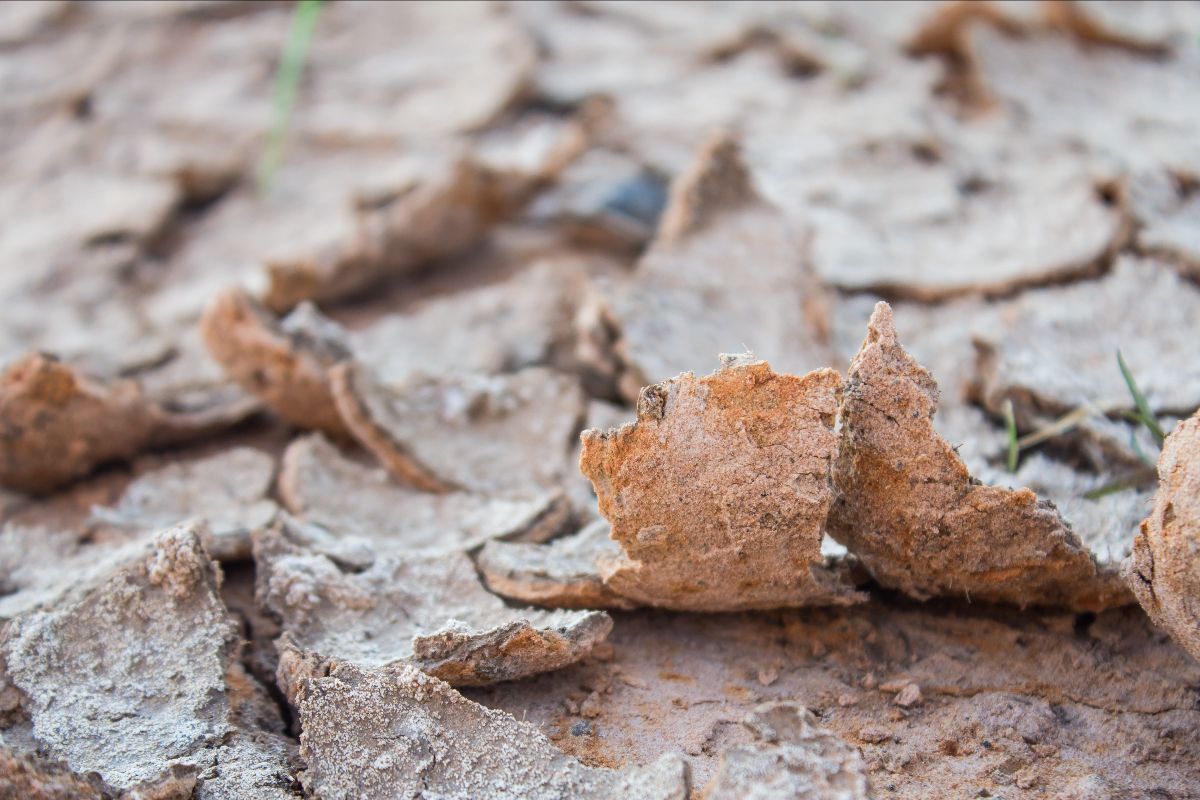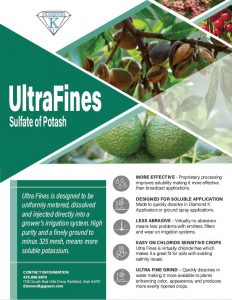
25 Oct Low Rainfall Can Cause Increased Soil Sodium Levels
This year growers all over the country dealt with extremely dry conditions. This means you should be concerned with sodium buildup. In low rainfall areas with high evaporation, sodium and other salts build up in the soil over time. Sodium attaches to the soil particles making them repel each other. This disperses the soil and breaks down the soil crumb structure.
As the soil structure starts to break down, water infiltration is reduced, resulting in less water available for your crop next year. Lower irrigation rates and reduced water infiltration causes sodium to build up more quickly. A rapid upward spiral of sodium levels will cause the collapse of soil properties and plant health.
High sodium levels compete with calcium, potassium, and magnesium for uptake by plant roots. Long before you see the classic sodium toxicity symptoms in the plant leaves, you will notice higher pest and disease pressure. Spider mite infestations are very often associated with high sodium. Death of plants from fusarium and other fungal diseases is very common in low calcium, sodic soils.

In soils that are accumulating sodium, additional potassium may be needed. Plants rely on potassium to regulate the opening and closing of the stomata. The stomata are important for allowing the movement of carbon dioxide into the plant, as well as the release of oxygen and water vapor.
When potassium levels within the plant are low the stomata become slow to respond and they do not close as quickly, resulting in additional loss of water vapor. Plants with an insufficient potassium supply are more susceptible to drought. Applications of high-salt potassium like potassium chloride can make this problem worse.
You cannot remove sodium without leaching which needs free water movement through the soil profile. To leach sodium, you will need calcium sulfate dihydrate gypsum which is soluble. The soluble calcium ‘kicks’ the sodium off into the soil solution where it can be leached out. Calcium improves soil structure by creating aggregates, counteracting soil dispersion, and improving water infiltration, allowing the water with the sodium to leach out.
The best source is gypsum. The best time to apply it is in the fall so any rainfall or moisture received helps leach the sodium. The addition of block polymer soil surfactants will further improve the penetrating ability of water.
Contact your Diamond K Representative for a prescriptive sodium soil reduction plan.
 Ultra Fines is designed to be uniformly metered, dissolved and injected directly into a grower’s irrigation system. High purity and a finely ground to minus 325 mesh, mean more soluble potassium.
Ultra Fines is designed to be uniformly metered, dissolved and injected directly into a grower’s irrigation system. High purity and a finely ground to minus 325 mesh, mean more soluble potassium.
Download the Ultra Fines information sheet or to learn more about using Fast Lap in your irrigation program, contact your Diamond K Rep today.


